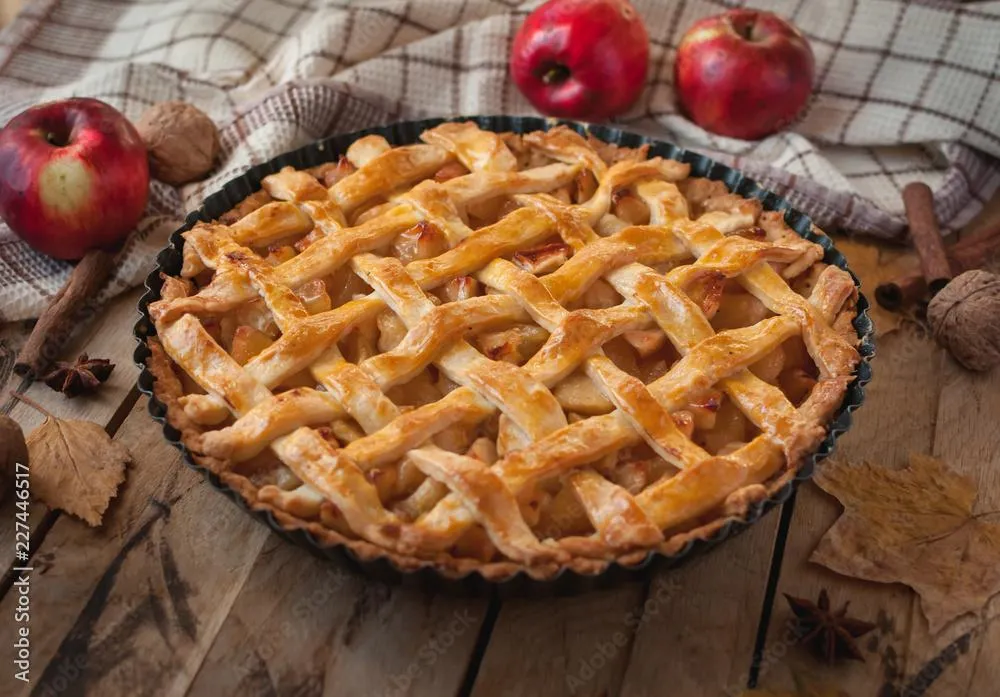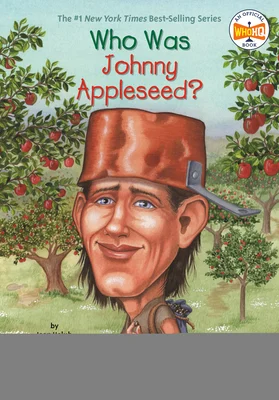Articles
Exploring History's Greatest Adventures throughout time!


As American as Apple Pie
Ever hear the phrase, “as American as apple pie”? It’s odd because apples are not native to America. So why are they compared with being American?
Apples travel well, store nicely and make excellent cider. That’s probably why the colonists who founded Jamestown in 1607 brought them to our shores along with seeds to plant orchards. Northern colonists brought them as well, likely for the same reasons.When you think about it – the analogy makes sense for that reason alone. Like the apple, most Americans are either immigrants or descended from immigrants. Today, apples come from all over the world – just like we do!
The earliest known use of the phrase was in 1902. Someone wrote that apple pie should only be eaten twice a week. The New York Times editor didn’t like that and responded, saying, “Pie is the American synonym of prosperity.” He left the type of pie open, but the connection to pie was made.
The March 1920 issue of World Outlook magazine printed, “Baths are as characteristically American as apple pie.”
In 1928, the New York Times again used the phrase to describe Lou Henry Hoover’s (President Herbert Hoover’s wife) home-making abilities.
Whatever the origin or original meaning of the phrase, let’s celebrate being American with a yummy slice of good old-fashioned American Apple Pie.
American as Apple Pie recipe
Some apples bake down to make juice or applesauce, while others hold their shape better in pies. Therefore, the best apples to use for pies are those that hold their shape, like Cortland, Fuji, Granny Smith, and Jonathan.
Some apples are sweet and some are tart. Use your personal favorite and adjust the sugar up or down depending on how naturally sweet or tart the apple is.
Ingredients:
Prepared pastry dough for 2-crust pie
6 cups peeled and thinly sliced apples
½ to ¾ cup sugar
1 teaspoon ground cinnamon
1 tablespoon butter
Egg white from one egg
Instructions:
Step 1: Preheat oven to 450° F (230 degrees C).
Step 2: Line a pie plate with rolled out pastry. Let excess hang over edges for now.
Step 3: Whisk the cinnamon into the sugar so it’s well-blended. Then add the sugar mixture to the apples and stir so all apples are coated with cinnamon sugar.
Step 4: Dump the apples into the pastry or you can place them neatly.
Step 5: Dot the apples with butter and then cover with the top crust.
Step 6: Pinch the edges of the top and bottom pie crust together with your fingers, or you can press the edges with a fork to make a design. Be sure to completely seal in the apples so the juice can’t leak out.
Step 7: Trim the excess pastry with a scissors so nothing hangs over from top of bottom pastry.
Step 8: Cut a hole in the center of the pie about the size of a quarter.
Step 9: Brush the egg white all over the top crust. It’s okay if it gets on the apples. This will give it a nice shiny look when it’s done.
Step 10: Bake at 450° for 10 minutes. Then reduce oven temperature to 350° and continue baking 30 minutes more. Enjoy warm with ice cream or let it cool and serve chilled.
Apple-inspired activities
Perfect for after a field trip to an orchard, or just things to do with apples – like recipes, games, science experiments and more.
Suggested reading for kids:
By Joan Holub (Author) and Anna DiVito (Illustrator)
Children are sure to be fascinated by the eccentric and legendary Johnny Appleseed, a man who is best known for bringing apple trees to the midwest. Over John Chapman’s lifetime, he saw the country grow and start to spread westward. Traveling alone— in bare feet and sporting a pot on his head!—Johnny left his own special mark planting orchards that helped nourish new communities. His journeys and adventures are illustrated in a hundred black-and-white illustrations.
By Glennette Tilley Turner (Author), Susan Keeter (Illustrator)
Like other enslaved African American children, young Harriet Tubman had to work hard. In her master’s orchard, she spent long hours picking the juicy apples she was forbidden to eat. Harriet vowed to one day be free and to grow apple trees of her own. When she was grown, she made her escape to the North. Then, repeatedly risking her life, she returned to lead many other African Americans to freedom.
© 2023. Historic Books for Kids - All Rights Reserved
Reading Pennsylvania, USA




